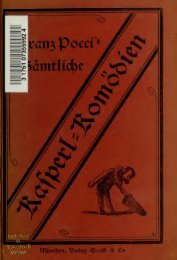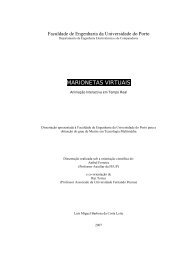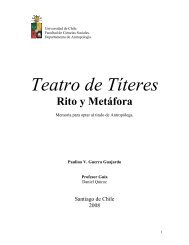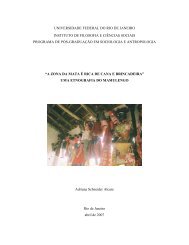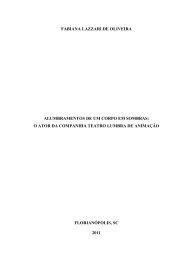ABSTRACT Title of Dissertation: THE PHENOMENOLOGY OF ...
ABSTRACT Title of Dissertation: THE PHENOMENOLOGY OF ...
ABSTRACT Title of Dissertation: THE PHENOMENOLOGY OF ...
Create successful ePaper yourself
Turn your PDF publications into a flip-book with our unique Google optimized e-Paper software.
century. 130 Its impact on puppetry was to relegate the majority <strong>of</strong> activity to schools and<br />
children’s entertainment circles, while only a handful <strong>of</strong> artists, whose works were <strong>of</strong>, in<br />
Bell’s words, “remarkable artistic integrity and beauty,” would be accepted in the<br />
pr<strong>of</strong>essional world. 131<br />
Though blackface puppetry clumsily followed both trails, the trend throughout the<br />
10s, 20s, and 30s was, in many cases, toward a curious division between exotic and local<br />
blackface images. This corresponded with a division between richer dramas with<br />
“realistic” images <strong>of</strong> blacks and simpler dramas with cruder images <strong>of</strong> blacks drawn from<br />
minstrelsy. Exotic black roles (moors, Fridays, and other “foreign blacks”) increasingly<br />
became the fare for full-length plays presented for paying audiences. By the 1930s,<br />
artists like Ralph Chesse and Frank Paris were creating puppets from actual black<br />
Americans, basing their images not on the crude designs <strong>of</strong> minstrelsy, but on the living<br />
African American actors and entertainers around them. Traditional minstrel images did<br />
not disappear, but became increasingly relegated to educational and children’s theatre.<br />
McPharlin, more than any other, contributed to the establishment <strong>of</strong> this division<br />
within blackface puppetry, by introducing his peculiar apperceptions (the observations<br />
one has regarding a lived experience that is not self-evident in the reality <strong>of</strong> that<br />
experience) to the developing discourse. His idea <strong>of</strong> blackface puppetry is clearly<br />
130 For a deep analysis <strong>of</strong> this process, see: Lawrence W. Levine, Highbrow/Lowbrow: The<br />
Emergence <strong>of</strong> a Cultural Hierarchy in America (Cambridge: Harvard University Press, 1988). Levine<br />
positioned supposedly “natural” cultural distinctions <strong>of</strong> elite and popular art, specifically in the historical<br />
dynamics <strong>of</strong> the late nineteenth century. Levine demonstrates how, in the United States during the 1800s,<br />
much <strong>of</strong> the arts, particularly Shakespearean drama and opera, was enjoyed with great interest by both the<br />
lower and upper classes. Intellectual and social discourse in the late nineteenth century produced a rigorous<br />
distinction between high and low art.<br />
131<br />
John Bell, Strings, Hands, Shadows: A Modern Puppet History (Detroit: The Detroit Institute<br />
<strong>of</strong> the Arts, 2000), 11.<br />
103



